When I first got into commercial office furniture, I thought a desk was a desk was a desk. Little did I know that office desks come in many different shapes and sizes. The alphabetically-identified desk styles had my head spinning until I learned the differences between them.
Without the help of leadership, I would still be calling desk returns "trolleys" and confusing a right return with a left return desk. Hopefully this guide will help you understand desk types before you start creating your own names for office furniture workstations and office desks. And props to my unrelentless leader and business partner Jeremiah Curry and project manager Jason Niemeyer for always stepping in to correct me when I got it wrong. But let's not get carried away about right and wrong, back to the desks.
If you're looking for a desk that excels in table top space, storage, and size, the U-Shape Desk is for you. A standard U-Shape Desk has three section. A front part of the desk, unsurprisingly, is called the "Desk" will often have a nice space for collaboration with others. The middle part of the U desk is called a "bridge". This connects the front to the back section that is generally of equal length; thus, making it in the shape of the letter U. Although, I still have a hard time with that.
U-shaped desks can also be adapted to be height adjustable, too. Whether you replace a portion of the U with a sit to stand desk, add a desktop accessory such as a Veridesk or buy a new desk that comes with it. There are many options of height adjustable desks, and the configurations with a U-Shape desk are many.
Side Note: The graphic designer side of me asks, "If the desk is a U-Shape, what type font is it?" I would also question if the U is uppercase, lower case, or a fancy script font? Nevertheless, I will try to describe this the best way possible with an uppercase U.
Here's a visual for comprehension.
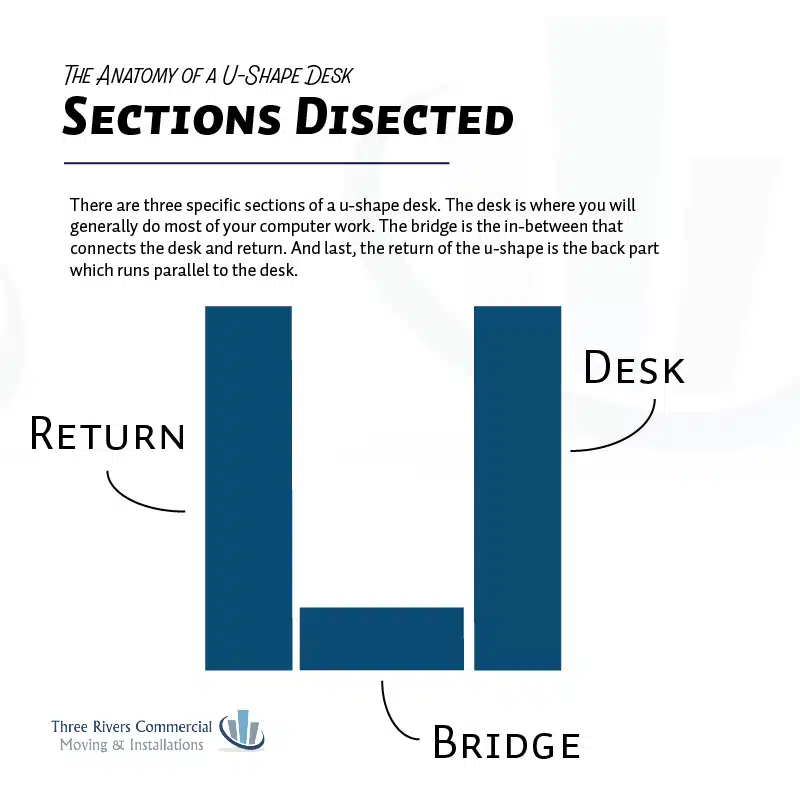
It seems straightforward, but nothing in contract furniture ever is. This is why there are entire office furniture systems built and experts such as our team of installers to put them together. And, because a desk isn't just a desk, the U-Shape desk can come in many forms.
U-Shape Desk featuring a P-Top Design
This desk design is for a more open concept, less bulky feeling U-Shape desk. It comes with a lateral filing cabinet, single filing cabinet, and additional storage drawers on the return side.
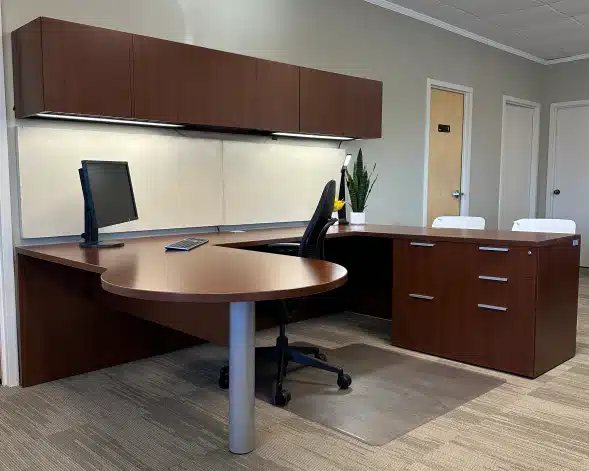
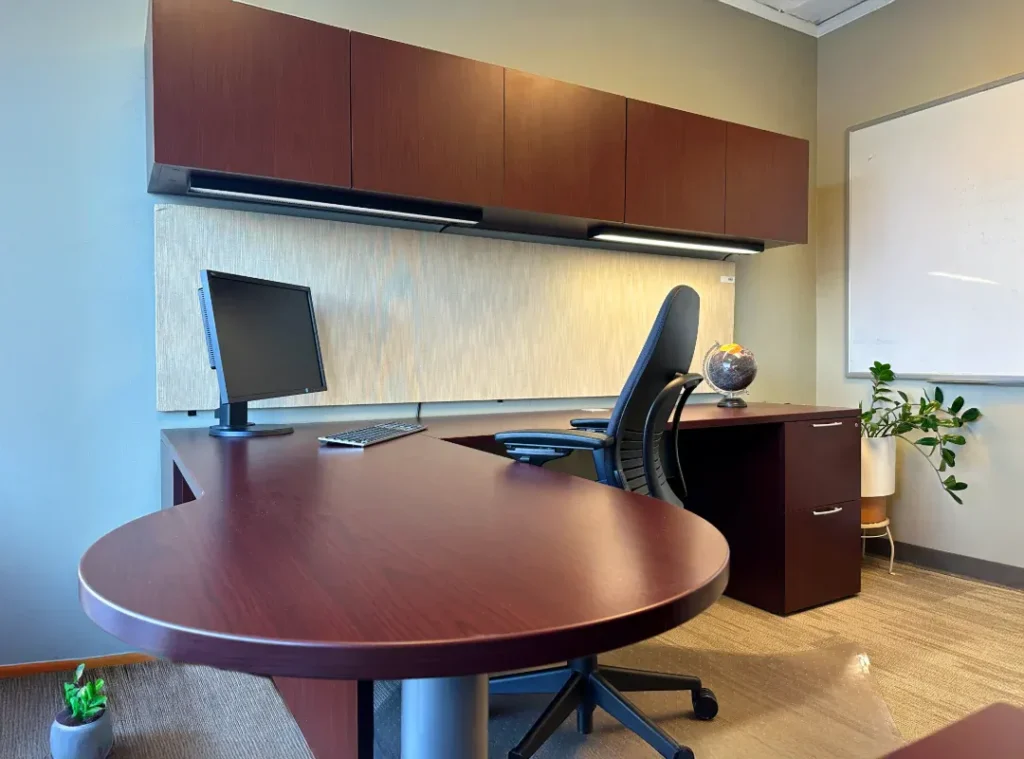
A p-top or d-top desktop generally has a single of double pedestal base. This desk is shown with a single chrome pedestal base.
The P-Top design is a light, friendly way to open up a crowded space. The rounded area is a great place to lay out paperwork, discuss business strategies and review items with coworkers. Keep in mind, similar desks can be called d-top desk. Like the ones shown above, these desks often features an open bottom with modesty panel.
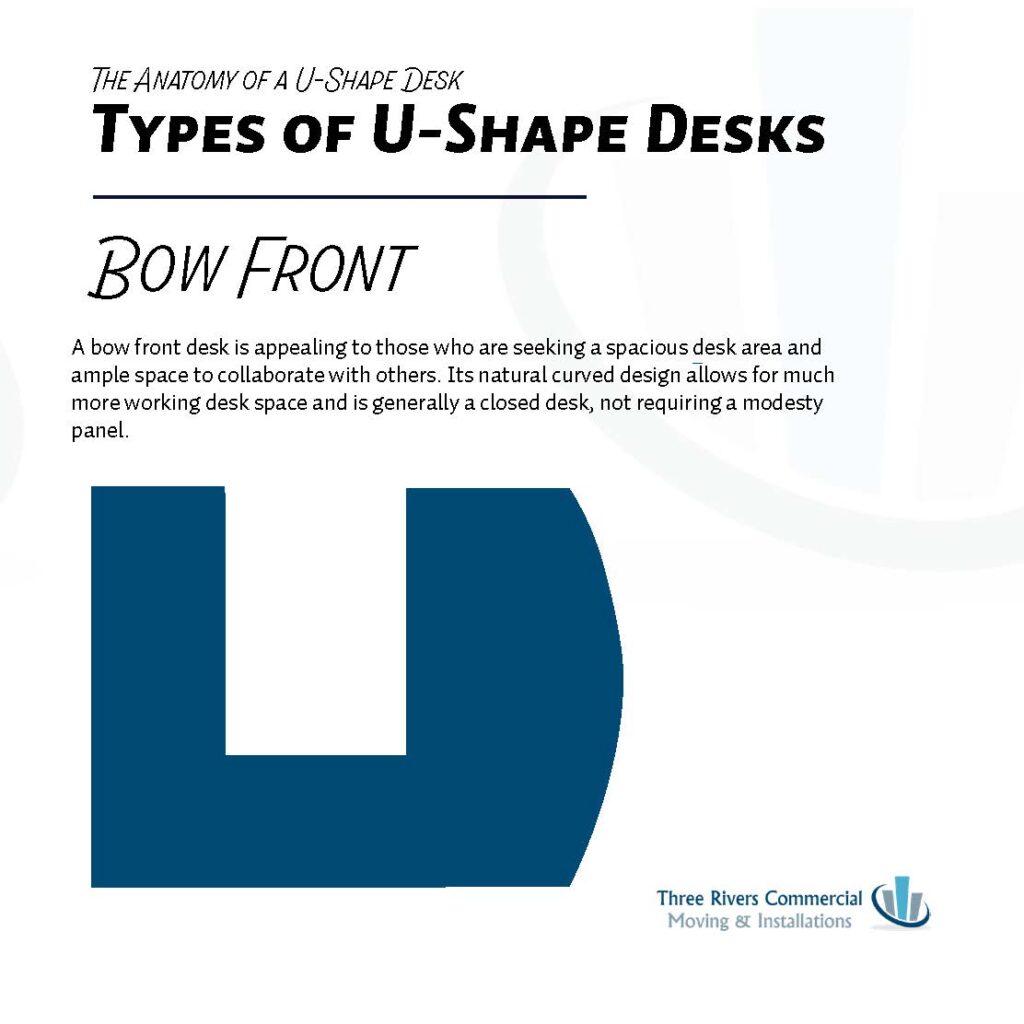
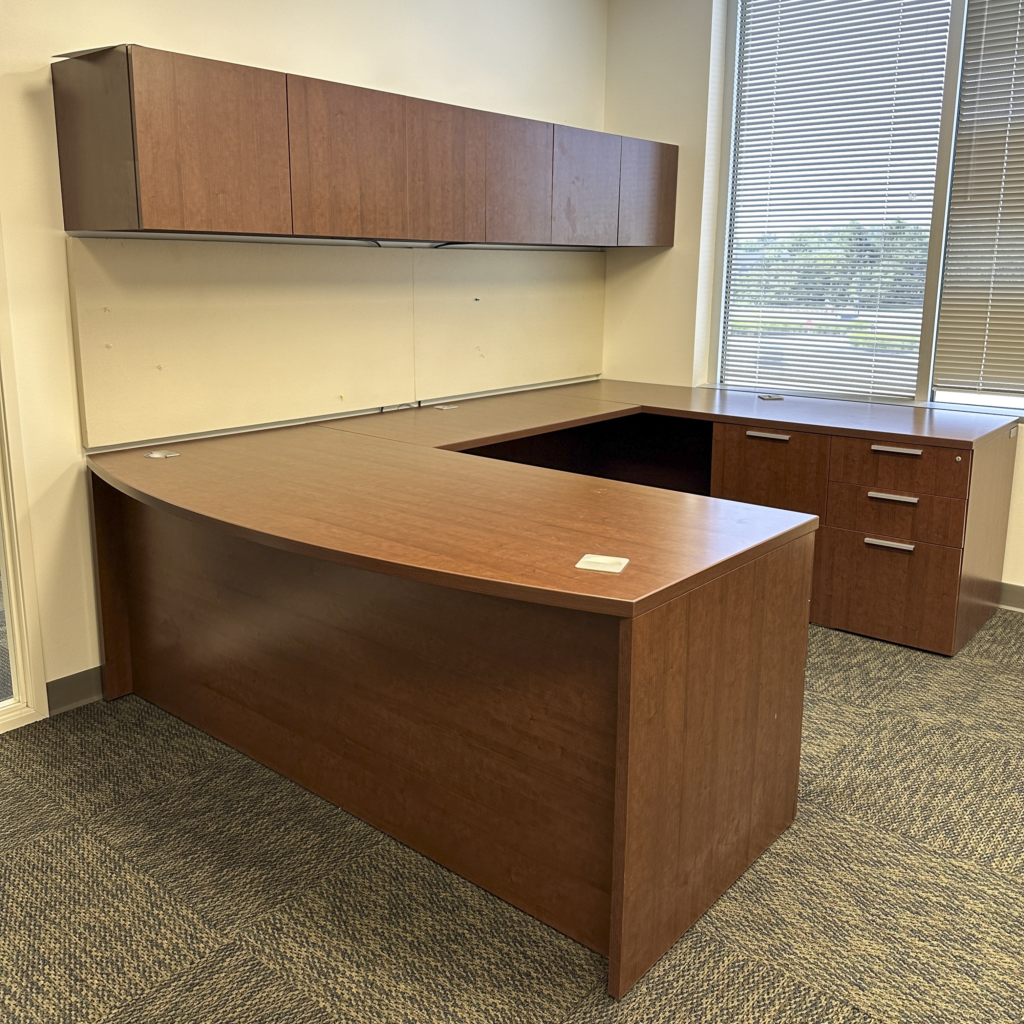
The bow front desk as part of a u-shape office set, can provide more privacy with its closed bottom design. Unlike the P-Top held up by a pedestal leg, this is fully framed and can also support additional desk storage.
Side by Side Comparison of a P-Top Desk and the Bow Front
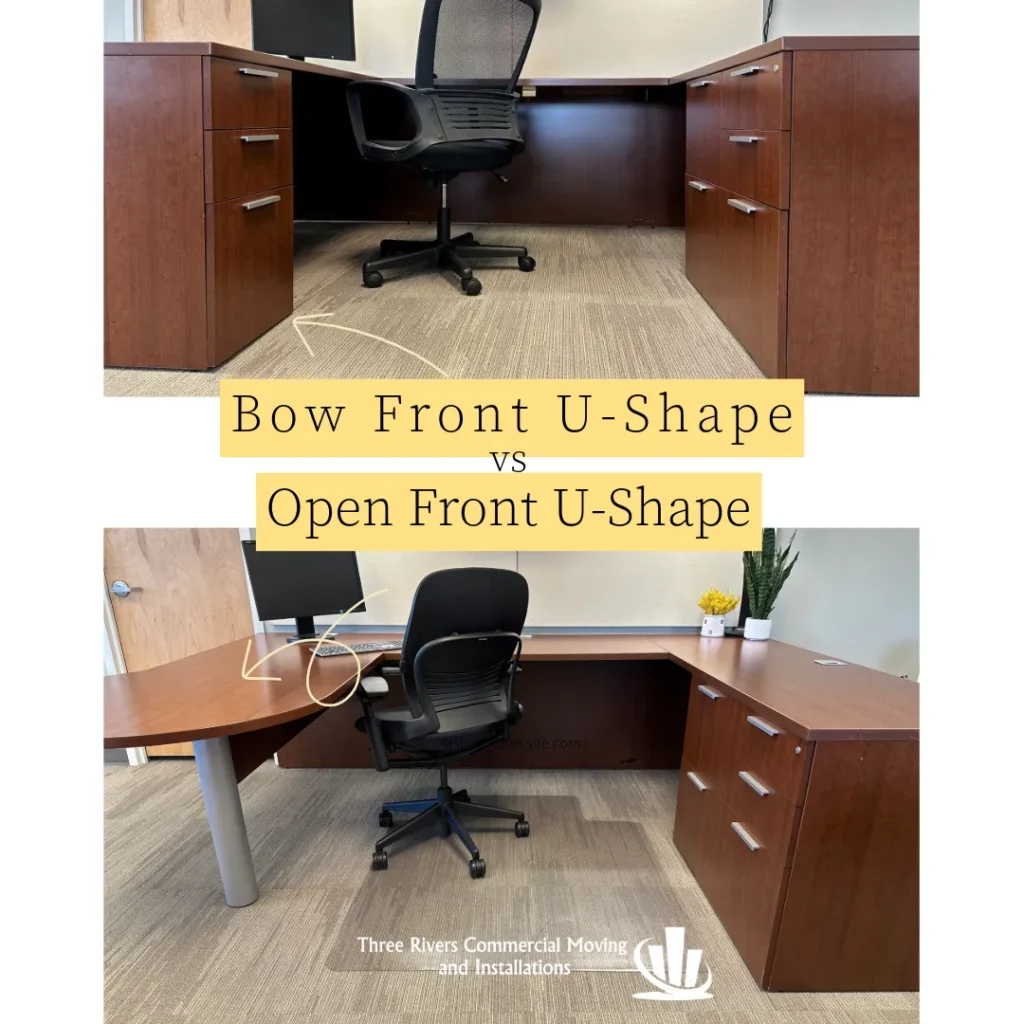
It is clear how these two u-shape workstations vary in style and design.
A straight U-shape desk keeps things simple and functional. With a continuous work surface that wraps around you, it gives easy access to everything you need without much movement. This layout is great for multitaskers who want space for a computer, paperwork, and maybe even a second monitor—all within reach. It’s clean, efficient, and fits well in offices that need a no-fuss setup that still feels spacious.
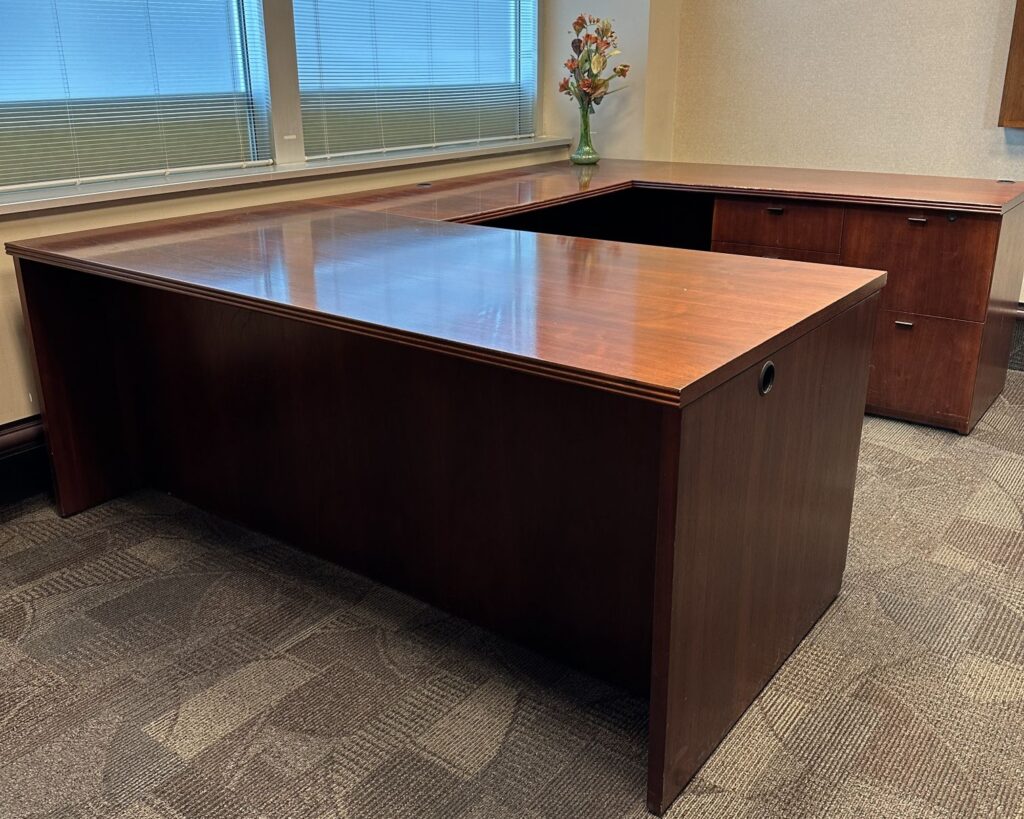
It’s easy to see how various U-shape workstations can look and feel completely different. Some offer a more enclosed, private workspace, while the other feels open and inviting. Each style speaks to different preferences and needs.
So, how do you determine which desk is best for your space?
All of these factors play a role in finding the right desk for your space. Even simple things like cable management and future reconfiguration options should be considered. Taking the time to think through your work habits, office layout, and long-term needs will help you choose a setup that supports both comfort and productivity.
